In recent years, the rapid development of solar energy projects has created challenges in electricity transmission, and also the need to install energy storage systems (Battery Energy Storage System – BESS).
From the design works, the challenge in calculating and sizing of the BESS is to determine the number of times it must operate with capacity lower than the available output, the amount of electricity generation is curtailed according to requirements of the National Load Dispatch Centre (NLDC).
For the control system of a solar power plant that does not indicate the Plant’s available output capacity according to solar irradiance, ambient temperature, etc. Calculation to determine the amount of curtailed output capacity and the number of times the output capacity is curtailed will be very difficult.
To solve this problem, one of the solutions is to use machine learning through neural networks to train based on the existing and very large data system of the surveyed solar power plant.
Machine learning is a field in artificial intelligence that involves building models and algorithms that let computers learn from data and automatically find rules and patterns in that data. The process of building a basic machine learning model includes the following steps:

Gathering Data: Collect the right data sets for the specific problem we want to solve. This data may include numeric information, text, images, sounds, or other related data forms.
For the problem of BESS sizing, the data that can be used for training are as shown below.
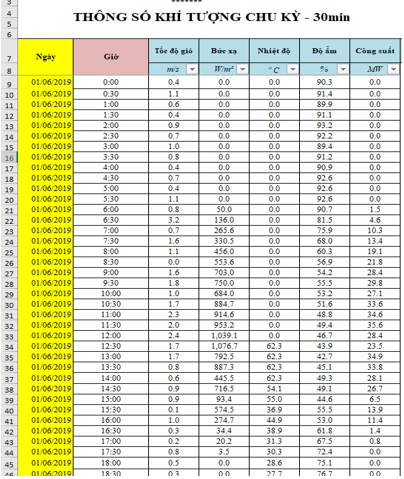
Data preprocessing: Collected data usually needs to be processed before applying machine learning. This includes cleaning the data, handling missing values, normalizing the data, and converting the data into a format suitable for model building.
Invalid data, possibly due to damaged radiation sensors, needs to be processed or removed before being included for training as shown below.
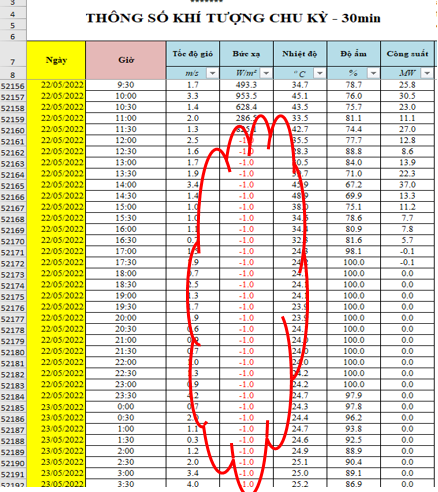
Analyzing Data: By manipulating the data using various data analysis techniques and tools, you can begin to find trends, correlations, outliers, and variations. During this stage, you might use data mining to discover patterns within databases or data visualization software to help transform data into an easy-to-understand graphical format.
Calculate the correlation coefficient between radiation intensity and generation capacity of the plant on the power system to analyze data.
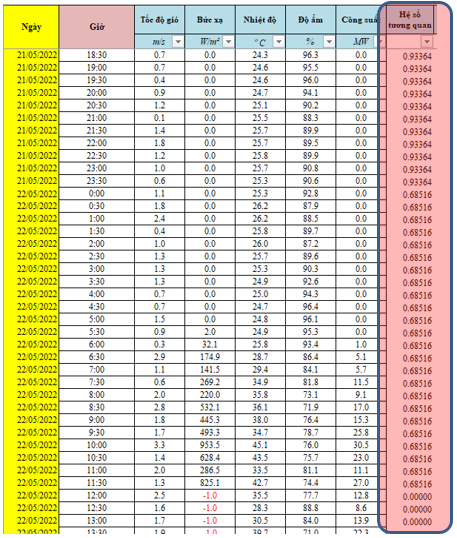
Regarding days with low correlation coefficient between radiation intensity and output capacity, the graph of above-mentioned parameters is greatly distorted. Those were the days when the Solar farm had a large reduction in generating capacity (due to NLDC’s curtailed requirements or due to incidents or damage to repair part of the Solar farm).
For example, in the figure below is a graph of the plant’s output capacity on the Power system according to radiation intensity on November 15, 2020 and July 27, 2021, the corresponding correlation coefficient is 0.708. and 0.6704.
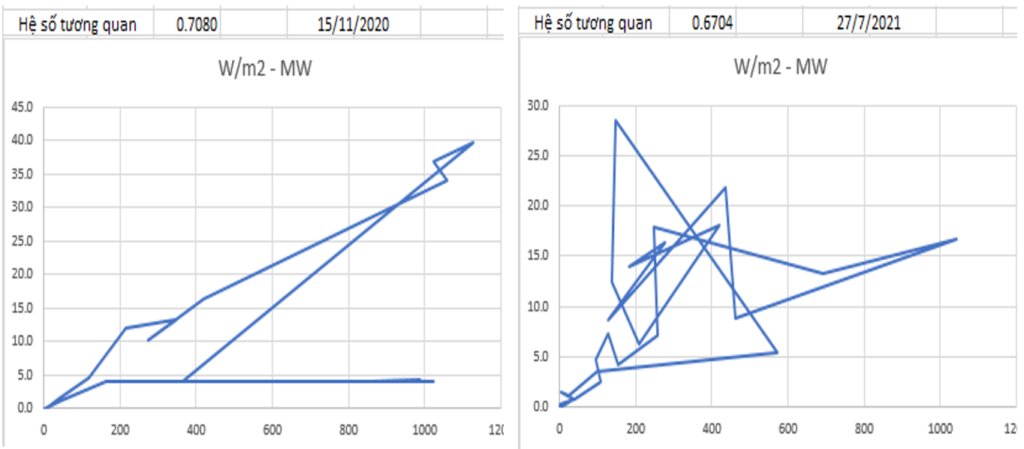
For cases that the correlation coefficient between radiation intensity and output capacity of the Solar farm on the Power system is high, such as on January 13, 2020 or February 6, 2020 or March 19, 2020 or May 21, 2020. The graph between these two parameters is a nearly linear curve and passes through the origin, shown in the figures below, these are the days when the plant’s generating capacity is not curtailed.


Based on the correlation coefficient between two parameters, radiation intensity and output capacity of the Solar farm on the Power system, we will classify data for training using the python programming language.
Model building: Prediction Modeling is a statistical technique commonly used to predict future behaviors. Predictive modeling solutions are a form of data mining technology that analyzes historical and current data and creates a model to help predict the available output capacity. The program is written in the Python programming language and utilizes the Pandas library.
Deploy, evaluate and improve the model
Simulation results are obtained from the model based on the data set included in the training model. The Solar farm’s available output capacity is based on radiation intensity on February 19, 2020.
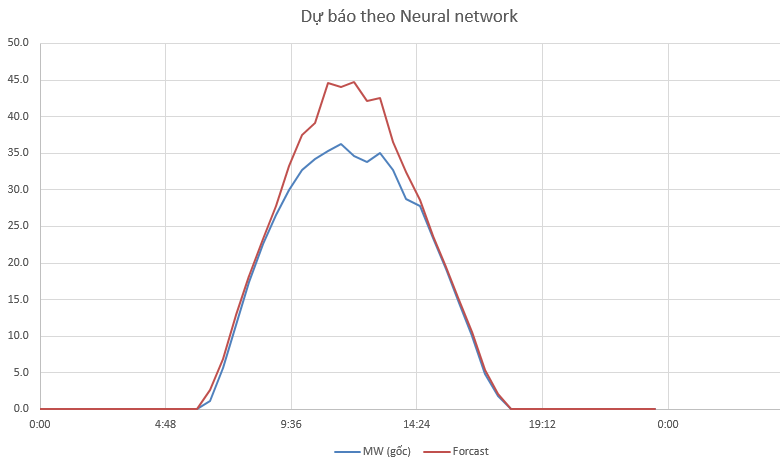
Improved forecasting model for the plant’s available output capacity based on radiation intensity on February 19, 2020.
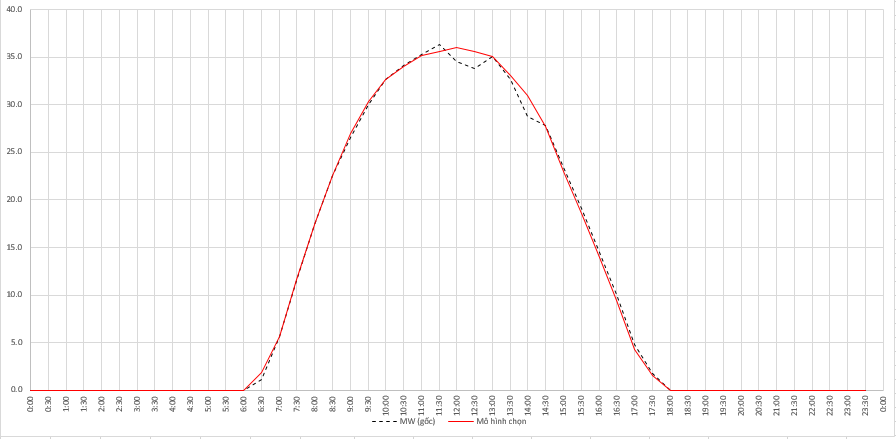
The rapid development of solar energy projects has created challenges in electricity transmission, which results local overloading in some areas. Curtailment of solar power generation capacity is undesirable but must be done to maintain a safe and stable operation of the power system.
To take advantage of the amount of power capacity curtailed due to transmission limitations, one of the essential solutions is to install a BESS system to store excessing energy during hours while NLDC requests to reduce power capacity. The Solar farm will supply electricity back to the power system during off-peak hours in the evening or any times when the Solar farm’s capacity is reduced due to clouds cover, …
Therefore, the use of machine learning through neural networks has opened up a solution in calculation, which is to predict the solar farm’s available capacity based on input radiation conditions and temperature. Using the solar farm’s available capacity from the forecast will determine the amount of curtailed power capacity, the number of times the power capacity is curtailed, etc. From there, we will calculate and select the size of the BESS, which will be appropriate for each specific Solar farm.
